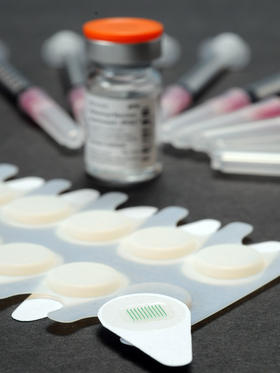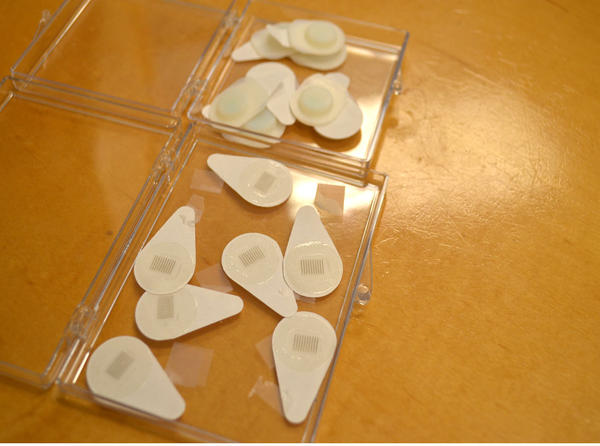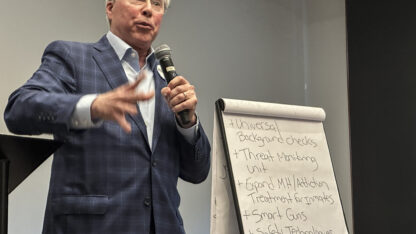Microneedle Patches Could Be The Future Of Vaccinations
Georgia Tech professor Mark Prausnitz has spent two decades developing microneedle patches.
These are very tiny needles that dissolve into your skin to painlessly deliver vaccines against viruses like polio and the flu.
To see the needles, you have to get really close and squint.
Prausnitz shows off about a dozen patches in his office.
“If your eyes are good you can see 100 little spots,” Prausnitz says. “And if your eyes were really good or if you used a microscope, you would then zoom in and see that each of those little spots corresponds to an inverted cone.”
The silver cones are crammed into 1 square-inch on the patch. The cones hold the vaccines.
After the patch is pressed onto the skin, the water-soluble needles dissolve into your skin after 15 minutes.
They would be easy to transport, affordable and wouldn’t require a doctor.
“We would like to remove the health care professional from the administration of the vaccine and instead let people go to the corner store and pick up vaccine patches from the shelf and bring them home for themselves and their family and self-administer them,” Prausnitz says.
Last month, Georgia Tech and Prausnitz’ company, Micron Biomedical, received a $2.5 million grant from the Bill and Melinda Gates Foundation to develop and commercialize a microneedle patch for the polio vaccine.
The idea is to find a way to get to people in war-torn areas such as parts of Nigeria and Afghanistan where polio still exists.
“These are places that are not only poor but hard to get access to because there’s war going on there,” Prausnitz says. “We need to have a vaccination method that allows us to not have to set up clinics with doctors and nurses and allow people to go door-to-door, to be very nimble and to get vaccines out to people who need it.”
Prausnitz says he expects the patches will be ready for wide-scale use in about five years.
9(MDAxODM0MDY4MDEyMTY4NDA3MzI3YjkzMw004))







